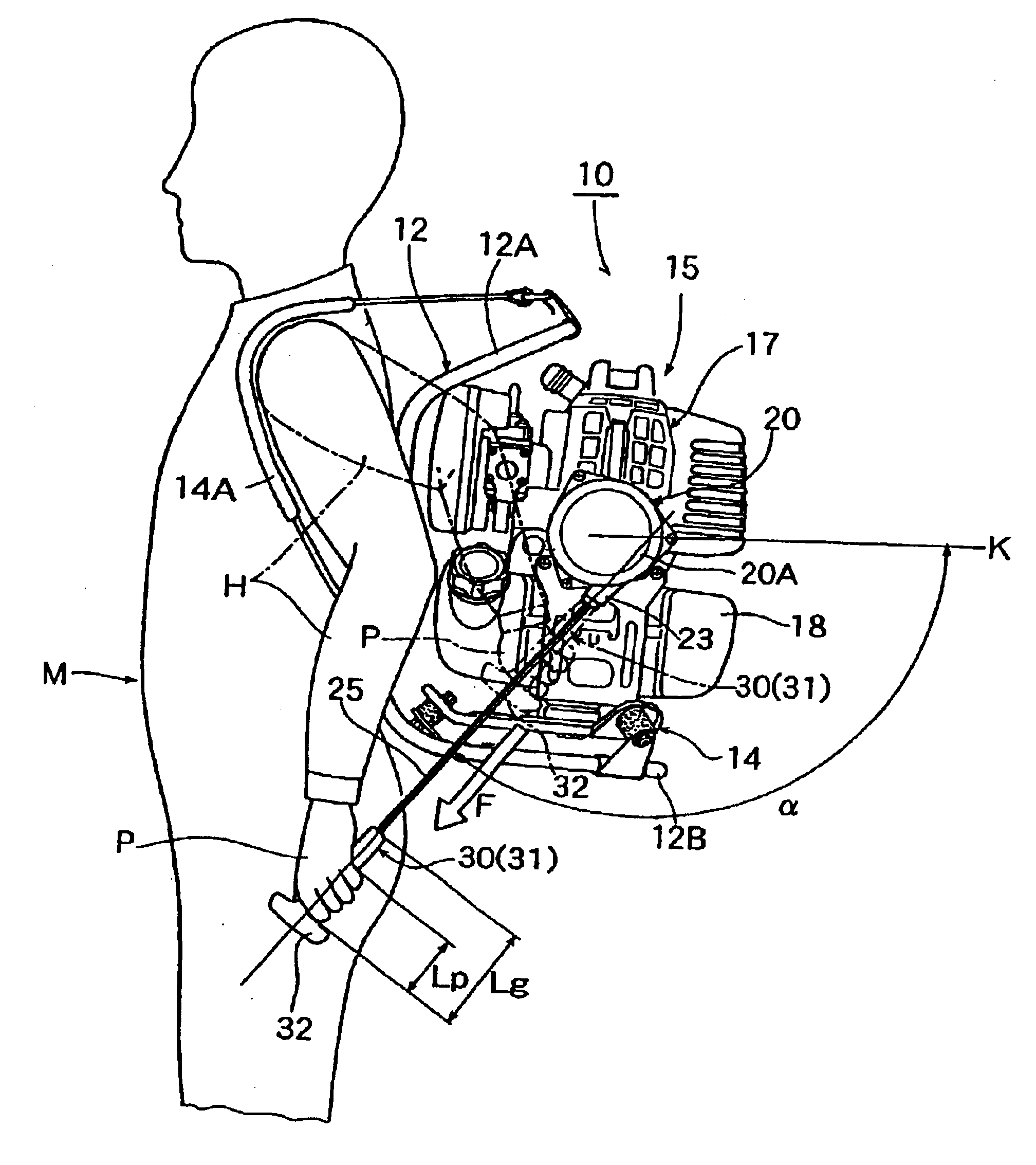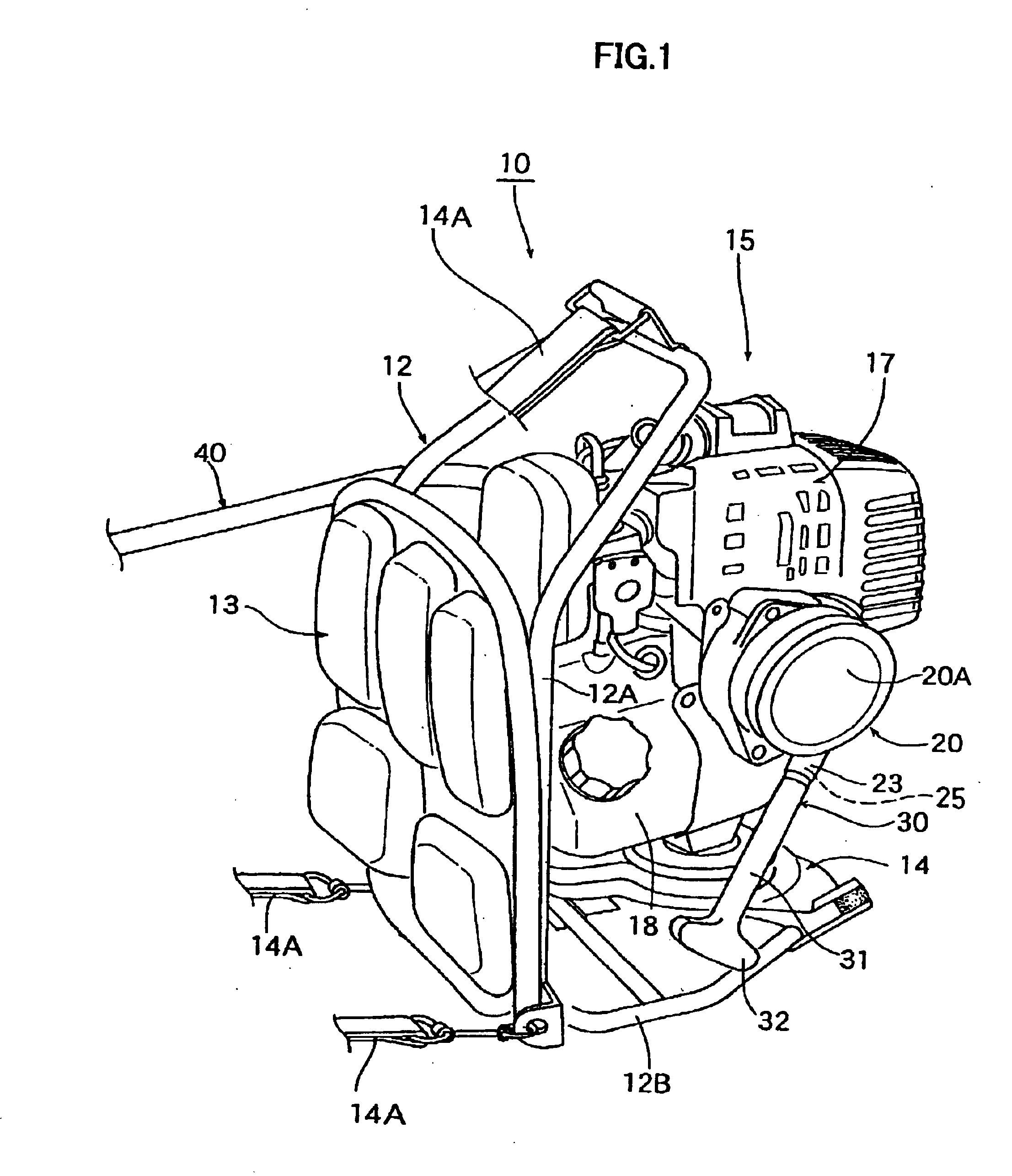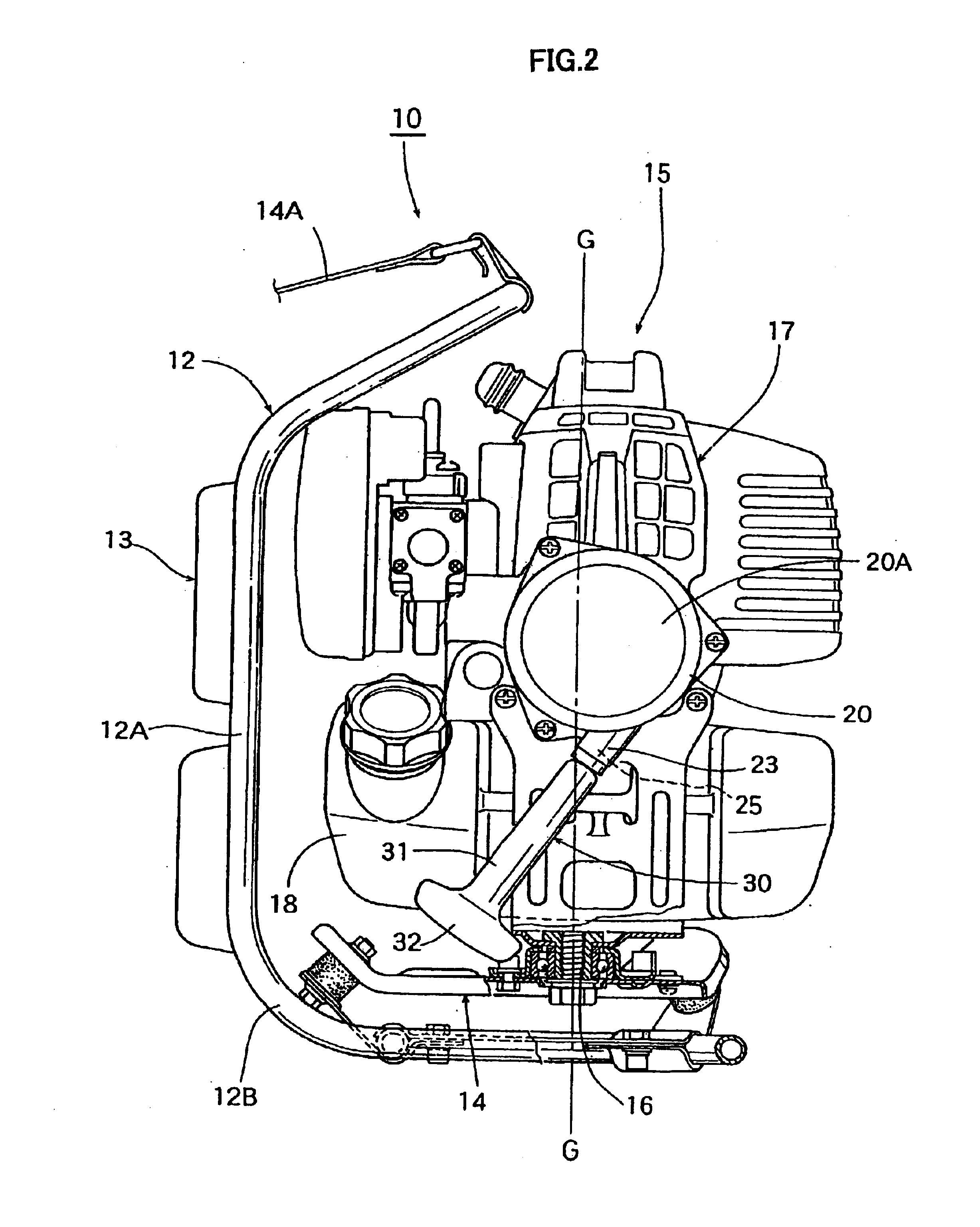[0011]The present invention has been made in view of overcoming the aforementioned problems accompanied with the conventional recoil starters, and therefore, it is an object of the present invention to provide a recoil starter for a backpack type power working machine, which is capable of easily performing the starting operation of an internal combustion engine under the condition where the working machine is kept shouldered by the operator's back, which can be manufactured lighter in weight and lower in manufacturing cost as compared with a D.C. motor type recoil starter, and the recoil handle of which is substantially free from hindering the movement of the operator and can be easily grasped by fingers, thereby enabling the recoil handle to be easily pulled out.
[0017]In a preferable embodiment of the recoil starter of the backpack type power working machine according to the present invention which is constructed as described above, since the recoil handle is disposed so as to be pulled down obliquely forward at an angle of 100° to 150° to the horizontal plane, the starting operation of the recoil starter can be easily performed with the working machine being kept shouldered by the operator's back. Moreover, according to the present invention, since only the mounting posture of the recoil starter and the recoil handle thereof are required to be modified with the main body of the recoil starter for a backpack type power working machine being permitted to be the same as the conventional recoil starter, it is possible to make the recoil starter lighter in weight and lower in manufacturing cost as compared with the D.C. motor type recoil starter. Further, since the recoil handle is positioned on the back of the operator, it is possible to prevent the recoil handle from hindering the movement of the operator during the operation of the power working machine.
[0018]Moreover, since the recoil handle is formed into a T-shaped configuration in side view, which comprises the grip portion having a length larger than the width of the palm of the operator's hand and a laterally extended stopper portion which is formed on a distal end, as viewed in the pullout direction, of the grip portion, it is possible to entirely grasp the recoil handle and to manipulate the recoil handle without imposing so much load on the grasping fingers as compared with the conventional
clutch type recoil handle, thereby making it possible to easily perform the pulling operation of the recoil handle.
[0019]Further, since the recoil handle is made longer as compared with the conventional recoil handle, it is possible for an operator to easily reach the position of the recoil handle while shouldering the power working machine on his back. Additionally, since a laterally extended stopper portion is formed on the grip portion, it becomes possible to prevent the operator's hand from slipping out of the recoil handle, thereby enabling the pullout operation of the recoil handle (starting manipulation of the engine) and making it possible to minimize the failure of the starting manipulation of the engine.
[0022]According to this power-accumulating type recoil starter, since the buffering / power-accumulating means (a spiral spring mechanism) is interposed between the driving member and the driven member, it is possible to derive a buffering effect from the spiral spring mechanism during the first-half driving process (until the
piston of the internal combustion engine reaches the
top dead center thereof) in the pulling operation of the recoil rope (recoiling operation), to enable the pulling force of the recoil rope to be accumulated in the spiral spring mechanism. During the latter-half driving process, the pulling force thus accumulated in the spiral spring mechanism during the first-half driving process is permitted to be combined with the pulling force to be actually effected in the latter-half pulling operation of the recoil rope to thereby generate a
resultant force, which is utilized as a force for starting the internal combustion engine. As a result, it is possible to minimize a fluctuation in pulling force of rope so as to smooth the rope-pulling operation, and also to enable the engine to be easily started without necessitating a large magnitude of pulling force.
 Login to View More
Login to View More  Login to View More
Login to View More 


